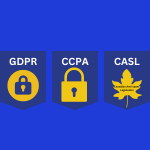Crafting Personalized Cold Emails: A Guide to Best Practices and Examples
Crafting Personalized Cold Emails: A Guide to Best Practices and Examples
Introduction:
In the digital age, where inboxes are flooded with countless emails daily, the art of crafting a personalized cold email has become more crucial than ever. Generic, one-size-fits-all messages are often ignored, making it essential for businesses to master the art of personalization. In this blog post, we’ll explore the best practices for creating personalized cold emails, along with real-world examples to inspire your outreach efforts.
Understanding the Power of Personalization in Cold Emails
1. Segment Your Audience:
Before diving into the email crafting process, understand your audience. Segment your email list based on demographics, behaviors, or preferences. This allows for more targeted and relevant personalization.
2. Dynamic Content Insertion:
Leverage dynamic content insertion to tailor specific parts of your email based on the recipient’s information. This could include their name, company, or any other data that demonstrates you’ve done your homework.
3. Behavioral Triggers:
Consider incorporating behavioral triggers into your email sequences. For instance, if a prospect downloaded a whitepaper, follow up with related content or insights that align with their demonstrated interests.
Best Practices for Personalized Cold Email Crafting
1. Start with a Strong Subject Line:
The subject line is your first impression. Make it compelling and relevant to the recipient. Incorporate their name or reference a recent interaction to grab their attention.
2. Know Your Recipient:
Demonstrate that you’ve done your research. Reference recent news about the prospect, their company’s achievements, or even a blog post they’ve written. This shows genuine interest and increases the chances of engagement.
3. Clear and Concise Messaging:
Keep your message clear, concise, and focused on the recipient. Highlight the value you bring to them. Avoid lengthy paragraphs and get to the point to maintain their interest.
4. Call to Action (CTA):
Include a clear and compelling call to action. Whether it’s scheduling a call, downloading a resource, or responding to a specific question, guide the recipient on the next steps.
Real-World Examples:
Example 1: Subject Line – “Excited to Discuss Your Recent Product Launch 🚀”
Hi [Recipient’s Name],
Congratulations on the recent launch of [Product/Service]. I came across your press release and was impressed by [specific feature or achievement]. As someone who has helped [similar companies] achieve [result], I believe I have insights that could benefit [Recipient’s Company]. Can we schedule a brief call to discuss?
Best regards, [Your Name]
Example 2: Subject Line – “Quick Question About Your Recent Blog Post”
Hi [Recipient’s Name],
I hope this email finds you well. I recently read your blog post on [topic], and I couldn’t help but resonate with your perspective on [specific point]. I have some thoughts and ideas to share on this topic and would love to get your insights. Are you available for a quick call next week?
Best, [Your Name]
Conclusion: Elevate Your Cold Email Game with Personalization
Crafting personalized cold emails is an art that, when done right, can significantly increase your chances of grabbing the recipient’s attention and fostering meaningful connections. Embrace the power of personalization by understanding your audience, leveraging dynamic content, and incorporating real-world examples into your outreach strategy. Remember, it’s not just about sending an email; it’s about starting a conversation that adds value to your prospect’s journey.

A global leader in technology marketing and demand creation, B2B Technology Solutions offers a comprehensive range of performance-driven B2B lead generation solutions, including intent and install-based targeting, account-based marketing, and content marketing.
Quick Links
Connect
- contact@b2btechnologysolutions.com
- +1 973-968-5062

